There are places that don’t just invite you to look, but compel you to pause, breathe, and feel. For me, Bada Bagh in Jaisalmer was one of those places. On the outskirts of the “Golden City,” away from the rush of markets and forts, I stumbled into a world of silent grandeur — a garden of cenotaphs glowing under the desert sun.
As I walked through the sandstone arches and columns, camera in hand, I realized this wasn’t just another monument. It was a space where history, architecture, and emotion intertwined, waiting to be framed into timeless memories.
Walking Through History
Bada Bagh, meaning “Big Garden,” dates back to the 16th century. Maharaja Jai Singh II envisioned it as a garden oasis, but over time, it became the royal cremation ground. What followed was the creation of cenotaphs — locally called chhatris — built in memory of Jaisalmer’s rulers and their kin.
Each cenotaph stands with its unique design, yet together they form a harmonious rhythm of domes, arches, and pillars. I couldn’t help but imagine the hands that carved these details centuries ago, never knowing their artistry would one day captivate travelers and photographers alike.
The Photographer’s Playground
Photography at Bada Bagh is a journey in itself. The arches act as natural frames, leading the eye toward the domes that rise against the desert horizon. The pillars cast playful shadows, and the carvings reveal new patterns with every angle.
I found myself experimenting constantly:
- Wide shots to capture the scale of the cenotaphs scattered across the landscape.
- Low angles to emphasize the grandeur of the domes against the open sky.
- Close-ups of intricate carvings that told stories in silence.
But what truly amazed me was the light. In the early morning, the sandstone shimmered in soft golden hues, while in the evening, the setting sun turned the entire site into a stage of warm silhouettes. Every photograph felt less like a capture and more like a conversation with history.
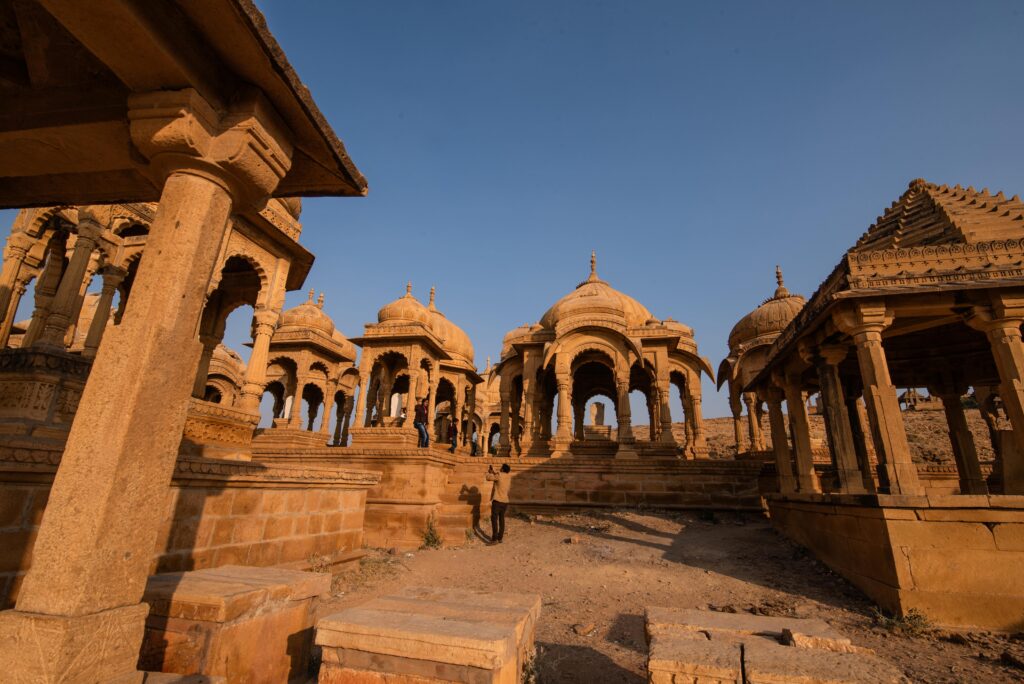
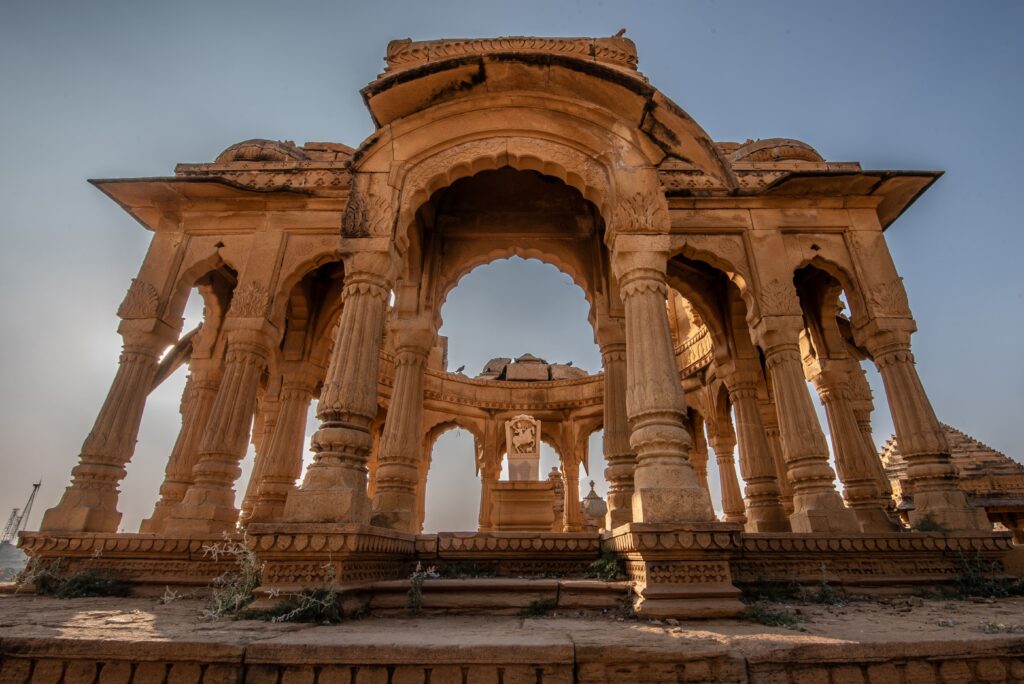
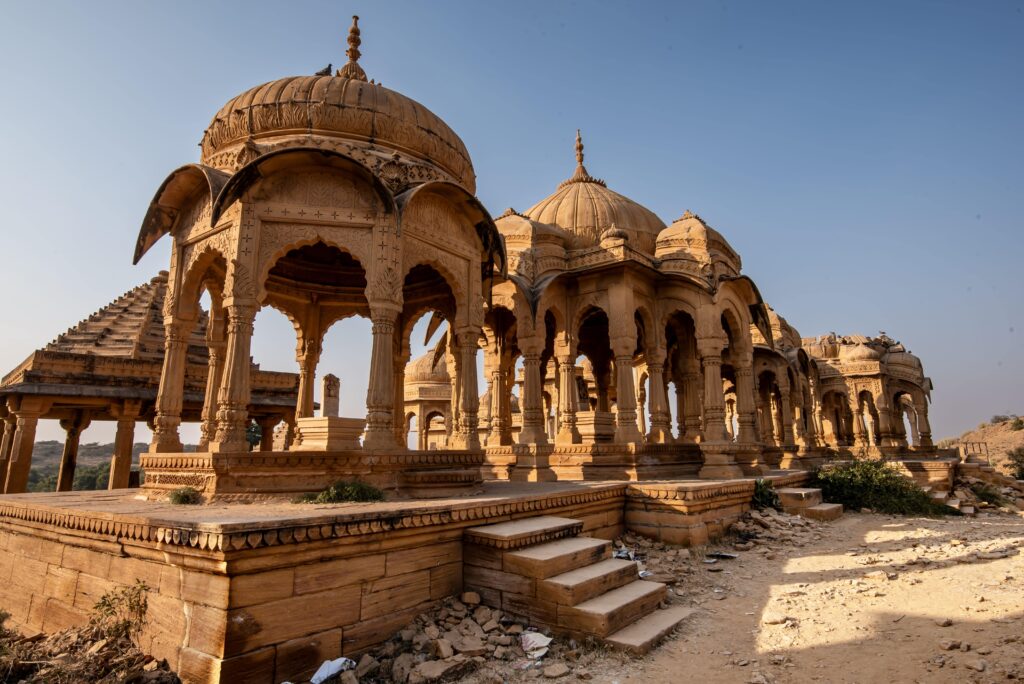
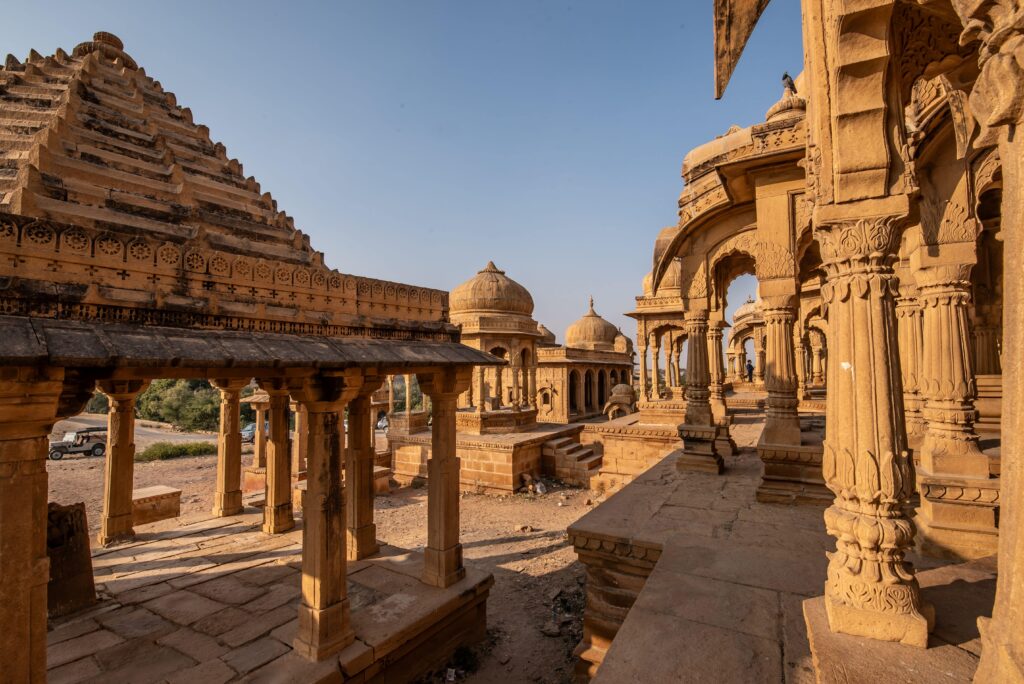
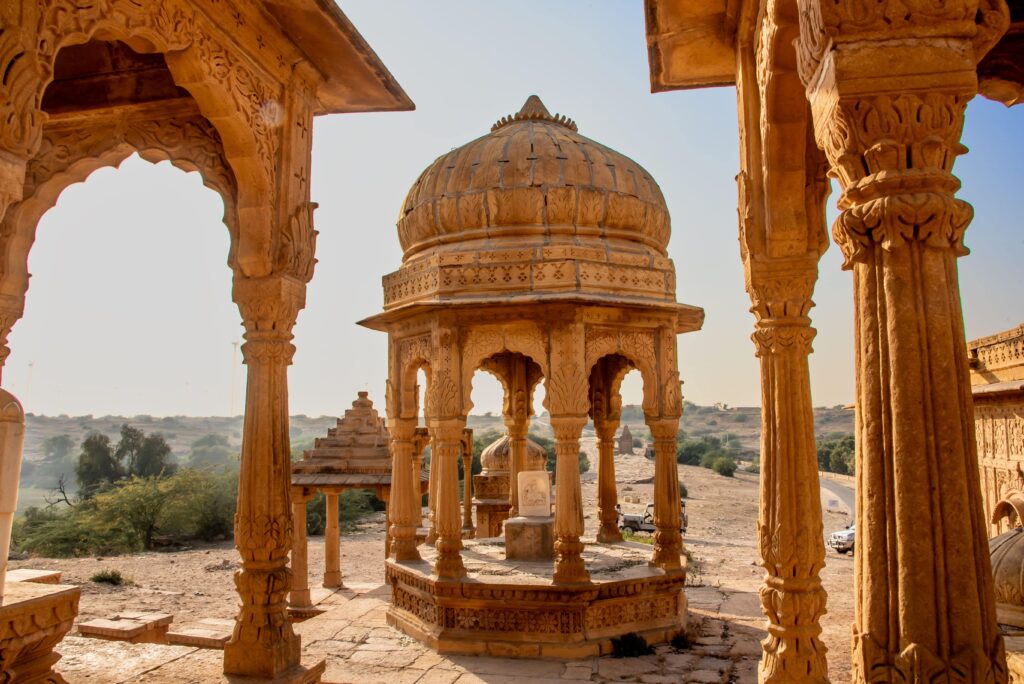
The Silence That Speaks
What struck me most was the quietude of Bada Bagh. Unlike the buzzing Jaisalmer Fort or the lively lanes near Patwon Ki Haveli, here the air felt still. The only sounds were the desert wind and the occasional bird perched on the domes.
Standing in the middle of the cenotaphs, I felt a strange calm. It was as if time itself had slowed down, allowing me to soak in the beauty of a place built to honor the past. The cenotaphs are not merely stone memorials; they are symbols of remembrance — and when you’re there, you feel part of that remembrance too.
Travel Notes for Fellow Wanderers
If you’re planning to explore Jaisalmer, here are a few things I’d recommend for Bada Bagh:
- Best Time to Visit: Early morning or late evening. The golden hour light brings the sandstone to life.
- Photography Gear: A wide-angle lens works wonders, but don’t underestimate the magic of a simple phone camera here.
- Entry Fee: Small and affordable, with an extra fee for cameras. Worth every rupee.
- Pair It With: Sunset at Vyas Chhatri or a stroll through Patwon Ki Haveli for a complete photography trail in Jaisalmer.
A Golden Memory
As the sun began to dip, I sat on the stone steps of one cenotaph, watching the domes glow in shades of amber and rust. It was hard to leave — not because I wanted more photos, but because the place had wrapped me in its stillness.
Bada Bagh is not just about sandstone chhatris. It’s about frames of eternity — frames that connect the present with the past, the traveler with the king, the desert silence with the hum of your own thoughts. For me, it was more than photography. It was a reminder that beauty often hides in stillness, waiting for us to stop and truly see.

Leave a reply